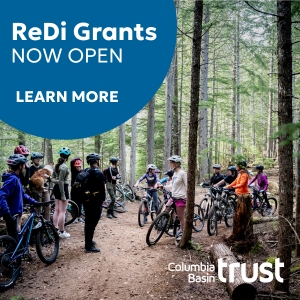
The Columbia Wetlands, an internationally recognized and highly sensitive ecosystem, is the next target of BC’s logging industry.
Canfor is proposing to log in the fragile Columbia Wetlands Wildlife Management Area (WMA). Pitched as a beetle salvage logging operation, the company’s efforts will do little to stop the spread of Fir Bark Beetle but will do significant harm to the sensitive ecosystem here.
“Wildlife in BC are in crisis; if they can’t be prioritized in one of the most important wetland complexes in North America and a provincially designated Wildlife Management Area, where will they be given priority?” questions Robyn Duncan, Executive Director for Wildsight.

The Columbia Wetlands are the largest intact wetlands in southern BC. Rich in plant and animal life, this 180 km-long wetland, stretching from Columbia Lake to Donald, is home to more than 300 species of animals, 65 of which are designated species at risk. World-renowned for its beauty and biodiversity, the Columbia Wetlands is also a key stopover and breeding ground for migratory birds, and helps connect sensitive species such as grizzly bears moving across larger landscapes.
WMAs are provincially-designated areas designed to protect fish and wildlife species or their habitats. Canfor’s proposed logging west of Castledale, 50 km south of Golden, entirely overlaps with the ~17,000 ha. Columbia Wetlands WMA. While Canfor argues this is salvage logging to address beetle-affected trees — an issue endemic in the area but also increasing with changing climate — this action will not help the problem.

“Logging in the WMA will not control the beetle infestation. The infestation is already advanced and the beetles will likely be elsewhere by the time any logging occurs,” states Duncan. “The proposed logging will further fragment mature forest adjacent to the wetlands and result in further losses to habitat and connectivity for species like grizzly bears and migratory birds.”
The proposed salvage logging will also require invasive new roads penetrating an area designed to protect wildlife, and will remove dead trees that provide valuable habitat for the hundreds of species that rely on this intact ecosystem.
“The timber values pale in comparison to the value that the forested areas within the wetlands provide to maintain the rich biodiversity of this globally recognized area,” says Duncan. “We urgently request that the proposed logging within the WMA not be approved, and for the Columbia Wetlands WMA to be removed from the Timber Harvesting Land Base.”
About The Columbia Wetlands Wildlife Management Area (WMA)
The Columbia Wetlands WMA was established for the “Conservation and management of fish and wildlife habitats and landscape connectivity so that the Columbia River Wetlands continues to function as a floodplain ecosystem with a complex biological community governed by natural fluvial and ecological processes”.
The Columbia Wetlands are the largest intact wetlands in southern BC and are recognized as RAMSAR wetland of importance by the United Nations. The 180 km-long wetland, stretching from Columbia Lake to Donald, provides home for hundreds or animals, 65 of which are designated species at risk, and 5 at-risk ecological communities.

























